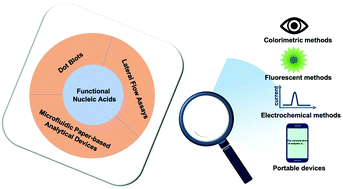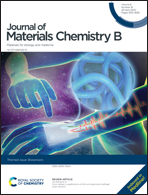Advances in functional nucleic acid based paper sensors
Abstract
Recently, portable sensing devices with point of care testing (POCT) capability have attracted great attention due to their inherent affordability and accessibility in low resource areas. Paper sensors possess excellent potential as POCT platforms because of low cost, ease of operation, disposability and high-volume manufacturing. Paper sensors that incorporate functional nucleic acids (FNAs) as recognition elements are particularly attractive given that FNAs can be isolated from random-sequence nucleic acid pools to recognize, or respond to, virtually any target of interest. In this review, the advantages of FNAs, particularly DNA aptamers and DNAzymes, as recognition elements for the design of paper sensors are first discussed. This is followed by reviewing three specific types of FNA based paper sensors: dot blots, lateral flow assays, and microfluidic paper-based analytical devices. Furthermore, advances in the signal reporting methods used by FNA based paper sensors are summarized. Finally, limitations of current FNA based paper sensors are discussed along with considerations of future research directions.

- This article is part of the themed collections: Editor’s Choice: Microfluidics and Biosensors


 Please wait while we load your content...
Please wait while we load your content...